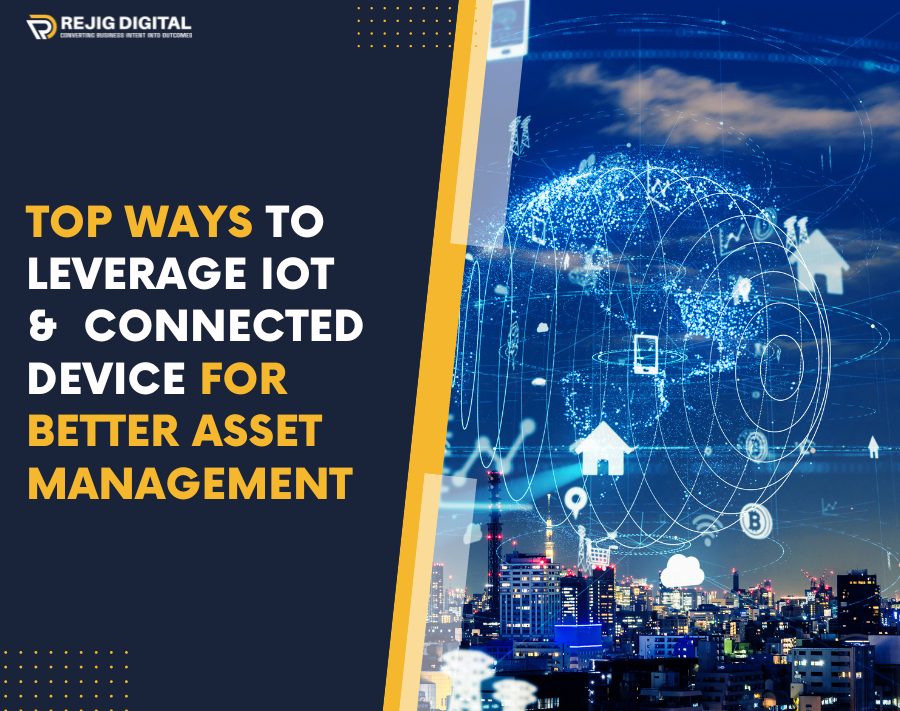Asset Management is the key to gaining a competitive advantage in the manufacturing sector. And with the Internet of Things (IoT), you can up your game of asset management easily.
IoT and Connected Devices let you better monitor your remote assets. Asset tracking has been a thing of this century thanks to the deployment of IoT. Many industries are replacing their legacy systems with connected assets. While the initial implementation might result in a big bill, it helps immensely in the long run.
Today, in this blog, we’ll be focusing on the use cases of IoT and connected assets in Asset management system. Read along as we explore all the possibilities of IoT in Industrial applications.
What’s Driving the IoT Implementation?
IoT implementation has been on the rise for quite some time now. According to data published by Juniper Research, there will be 37 billion industrial IoT connections by 2025. What’s driving this fast adoption? Let’s explore.
IoT-based asset management solutions are great at tracking the performance of an asset. It offers vital insights into equipment, based on continuous data collection. This big data is useful in maintaining assets while optimizing performance and minimizing operational expenses.
As more and more companies deploy IoT-based equipment, it brings the initial cost down. This, in return, makes IIoT even more attainable for small-scale industries.
5 Ways Businesses are Cashing in on IoT & Connected Assets
IoT in the manufacturing sector means much more than just connected systems. They take the asset management aspects to a whole new level. How, Here’s how:
#1 Increase in Productivity & Efficiency
With IoT, businesses can run efficiently while boosting productivity. As IoT gathers real-time operational data, it uses the same to manage the business efficiently.
For example, data collected from logistic networks, supply chains, and sales will result in a reduced inventory and lower shelf life of products. IoT also keeps machinery connected by working around the clock without any human intervention.
Also Read : How IIoT-based Monitoring Platforms Revolutionize Oil Refineries
#2 Trimming Operational Expenses
Better asset utilization is the key to bringing down operational costs. IoT keeps operational costs low with the help of predictive analytics. It also minimizes human intervention, which saves money for corporations. Humans are only needed for decision-making.
As instruments get old, the chances of production failure increase. But IoT-based equipment monitoring systems can not only predict probable failures but also look after the condition of the equipment. Thus bringing down the maintenance expenditure while increasing the lifespan.
#3 Big Data Big Opportunity
As legends say, data is the new oil. Big data brings big opportunities to capitalize on. IoT collects data 24×7. It never stops gathering data. And with all this data, business analysis becomes easier.
Connected sensors in assembly lines and production units inform us everything we need to know about the operations. From shipment locations to consumer demand, we can act upon the data collected by IoT and asset management systems for better management of the business and its assets.
#4 Efficient Energy Management for a Greener Future
Businesses can reduce their energy intake by improving their electrical efficiency. IoT, with the help of constant data feeding from connected devices, can detect redundant use of electricity and bring it to the notice of operators. Thus, it not only reduces energy bills but also contributes to a greener future.
Energy-saving through IoT applications is eminent in the Oil and Gas sector. With IoT, any spillage gets immediately informed, which results in a quick repair and lower loss of energy resources. Thanks to IoT, there has been a seismic shift in operations in oil and gas companies.
#5 Enhanced Workplace Security
Employees are also an asset to any company. Hence, ensuring their safety and security is a part of the whole process. IoT-based devices can be of help in improving overall workplace safety. Using sensors and risk detectors, some imminent safety concerns can be averted.
These things are particularly useful in high-risk zones like mines, construction sites, and in heavy industries. Employees can be remotely tracked and instantly alerted during an unwanted event. For example, in case of a fire, IoT-enabled fire detectors not only ring the fire alarm but also instantly inform the nearest fire brigade unit.
Conclusion
IoT implementation is the need of the hour for any business with progressing thinking. As above-mentioned, you must have understood so far that IoT is rightfully regarded as a promising digital technology. However, you can lay your hands on class-leading IoT devices with the help of Rejig Digital, a pioneer in enterprise digital transformation.


